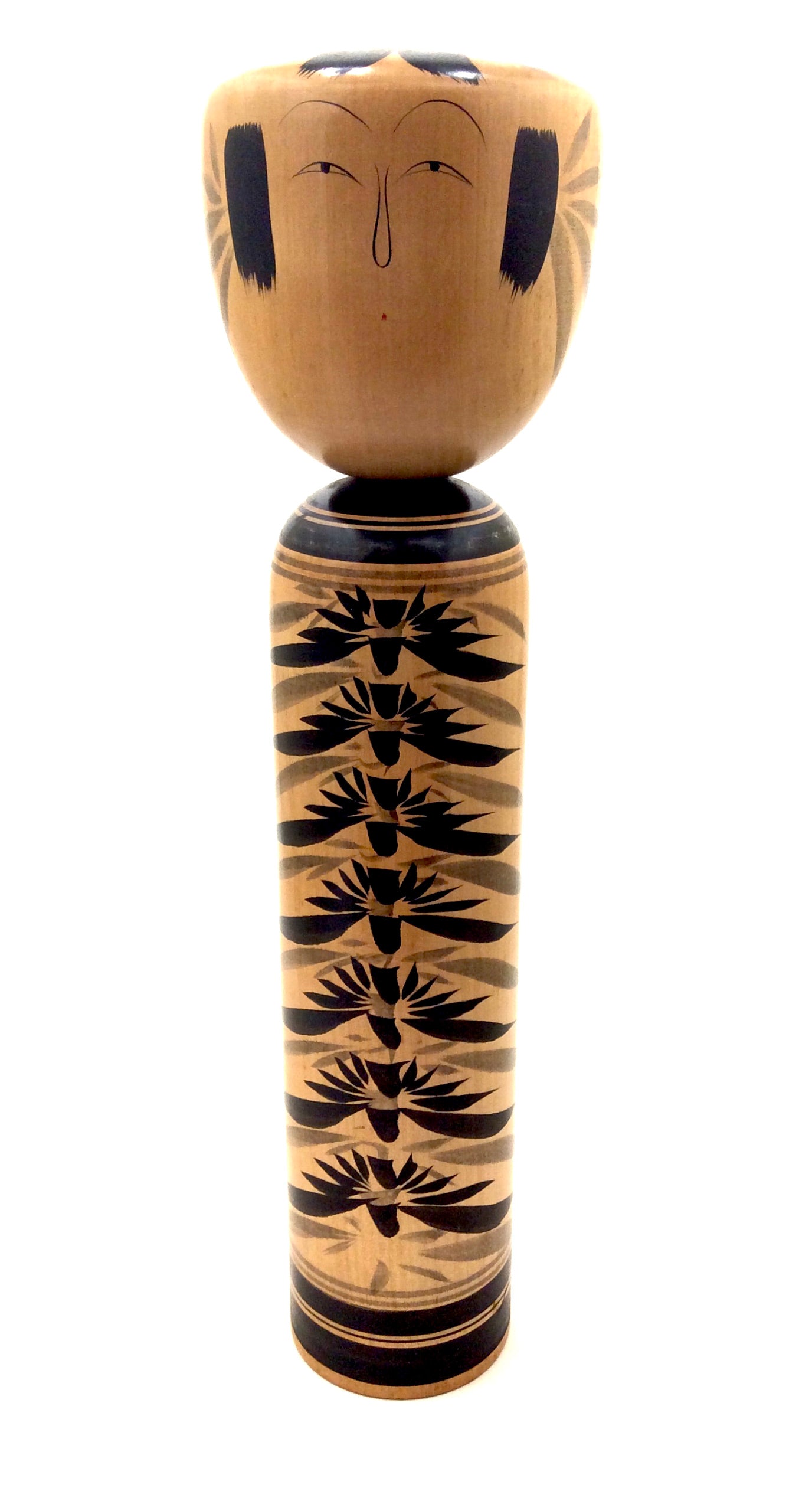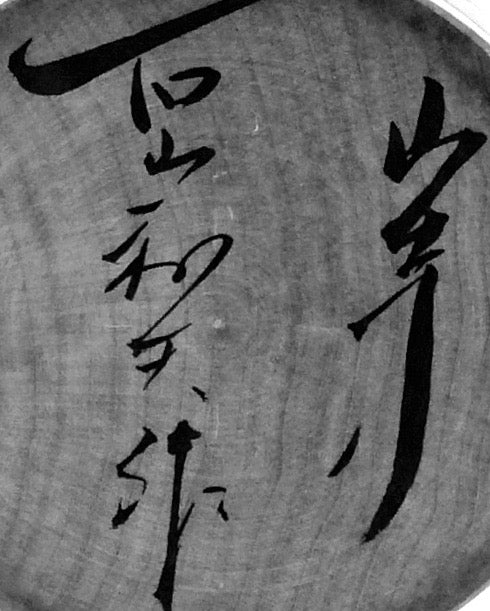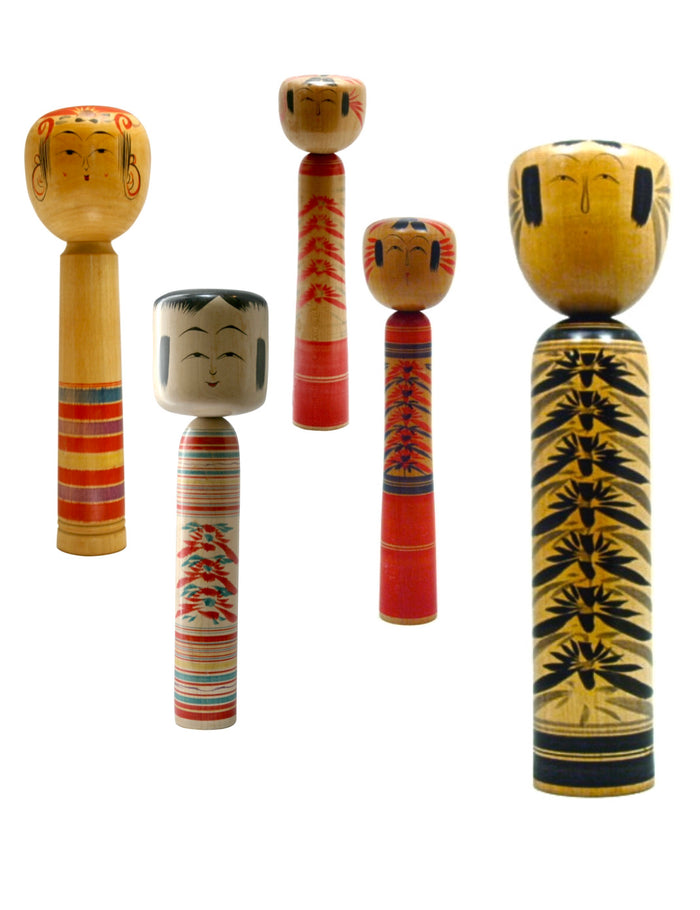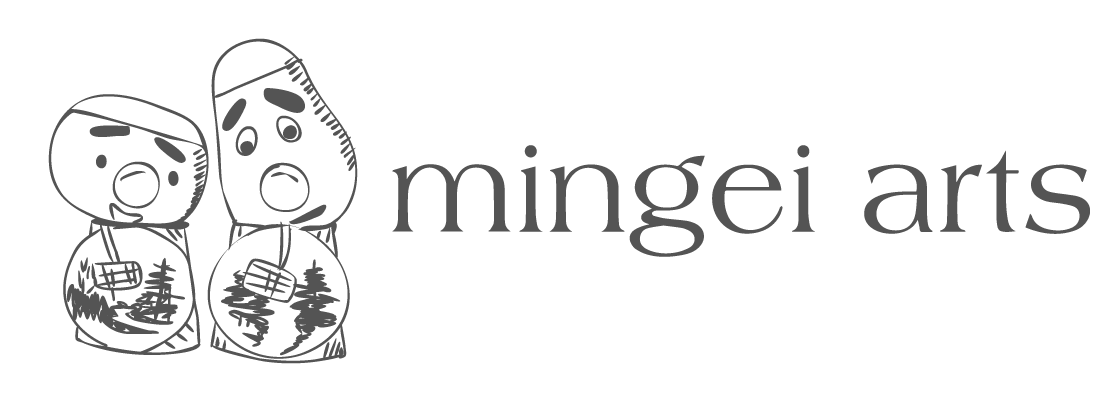

Vintage Zao Traditional Kokeshi by Ishiyama, Kazuo
Dimensions: 18-0” h
This doll is quite unusual because it is an extremely large heavily turned doll from one piece of wood weighing 4-1/8lbs, and secondly because it has all the traditional qualities of the Zao family dolls but is painted in black which is quite rare. The beautifully proportioned face is emphasized and incorporates the Futae-Mabuta, (double lid) eyes; the stylized Naga-Bana nose; and the Chrysanthemum flower motif on the top of the head and the side of the face. The stacked Chrysanthemum is framed with black Rokoru-Moyo line work and beautifully rendered in shades of gray and black being the main feature of her kimono. The doll is signed by the artist. The price includes FREE shipping with the exception of a small cost for packing supplies.
Vintage Condition: The piece is exceptional and in excellent condition, (“as is”), and retains the original craft/workmanship, and is completely free from the effects of aging. Any discoloration, chipping/cracking, surface wear, or structural damage is noted.

Japanese Traditional Kokeshi
Zao-Kei (Family)
Prefecture: Miyagi-Yamagata border
Origin:
Zao (Zao-Takayu) was a prosperous resort at the end of the 19th century, with four souvenir shops. However, no one was producing kokeshi for the shops, so craftsmen were hired who began competing with each other. They thus helped develop a distinctive Zao strain at the Atsumi Onsen, at the foot of Mt. Zao, on the Miyagi-Yamagata border. Eijiro Okazaki was the leader of this group, and the Onsen became the home of this traditional Kokeshi family.
Collector's note – characteristics/painting style:
These dolls, originating from, and having characteristics of, the Yamagata strain, are not always easy to identify. Facial features incorporate oversized heads and large, expressive eyes, with the Atsumi version having a long nose (naga-bana), much like the Hijiori and Tsuchiyu dolls, and hairstyles that show heavy use of ribbons on top of the head, with half-moon bangs and side tufts hanging into the face. Their thick waists are brightly painted in a variety of colorful motifs. The floral designs on Zao bodies include the more standard stacked, (or layered), chrysanthemum petals; bold, stylized cherry blossoms, peonies, and scattered sprays of small flowers. Most will also have colored banding at the neck and around the bases of the bodies.

Leading Craftsmen:
Abe, Shinya, 1937, (Atsumi, Yamagata) - Master: Abe, Tsunekichi. No additional published information
Abe, Tsunekichi, Master, 1904-1991, (Atsumi). No additional published information
Akiyama, Kazuo, 1935-1991 - No additional published information
Ariji, Shizuo, 1930, (Yamagata) - Master: Ishiyama, Sanshiro. No additional published information
Endo, Kozo, 1911-1991, (Yamagata) - Masters: Wagatsuma, Katsunosuke and Yoshida, Jin-ichiro. No additional published information
Eijiro Okazaki - No additional published information
Ishiyama, Kazuo, 1929-2017 - No additional published information
Ishiyama, Sanshiro, 1909-1996, (Yamagata) - Master: Shinano, Ichiro and Sato, Masao. No additional published information
Ishizawa, Kazio, 1929-2017, (Yamadera Yamagata) - Master: Ishiyama, Sanshiro. No additional published information
Okazaki, Ikuo, 1925, (Zao) - Master: Okazaki, Naoshi Omiya, Yasumitsu - No additional published information
Saito, Akira, 1927, (Zao) - Master: Saito, Matsusuke (1902-1976). No additional published information
Saito, Takeo - No additional published information
Umeki, Shuichi, 1929 - No additional published information
Explore & Learn More about Zao-Kei (Family)